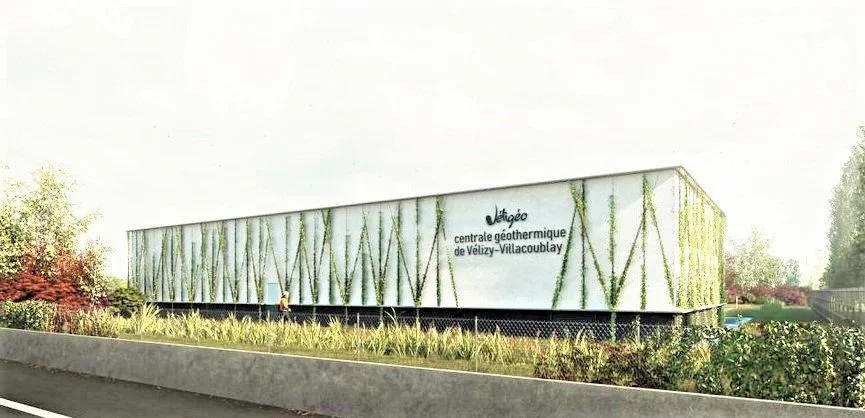Geothermal district heating in Vélizy-Villacoublay
Overview
Vélizy-Villacoublay, a commune with approximately 23,000 residents in the Yvelines department of Île-de-France, is setting a new standard for sustainable urban living.
Historically, the Vélidis district heating network relied entirely on fossil gas to supply pressurized hot water at temperatures ranging from 100°C to 150°C, providing essential heating and hot water across the city. However, driven by a vision for a greener future, Vélizy-Villacoublay has shifted to geothermal energy, significantly reducing its carbon footprint.
The geothermal plant's design integrates harmoniously into the landscape, enhancing local biodiversity and rainwater management. The facility features diverse vegetation, including copses, mixed hedges, and climbing plants, which provide nesting areas for wildlife and enrich the soil. Electrification of drilling equipment further minimized noise and reduced CO2 emissions by 550 tonnes, ensuring minimal disruption to the community.
An enabling framework
The geothermal initiative took advantage of the 2018 reform to the délégation de service public law (L.1410-1 du Code général des collectivités territoriales), which allowed public entities to contract directly with private bodies for infrastructure projects without a public tender. This streamlined process enabled the project to proceed swiftly, bolstered by the 2015 Energy Transition for Green Growth Law. This law facilitated municipalities' access to capital for renewable energy projects, allowing for the creation of public-private partnerships.
In 2019, Véligéo was established as a joint-stock company, with the city holding a 20% stake and Engie Solutions owning 80%. This partnership aimed to develop the geothermal resource to feed into the Vélidis district heating network. Véligéo was granted a 28-year supply contract, after which ownership may transfer to the city or be reassigned.
Technical details
The Véligéo geothermal plant, inaugurated on December 7, 2021, employs cutting-edge multi-drains drilling technology. This innovative technique, traditionally used in the oil and gas sectors, enhances access to geothermal heat reservoirs, significantly increasing the system's efficiency. The plant supplies 60% of the 19 km district heating network, providing space heating and hot water to 12,000 homes and saving 22,800 tons of CO2 annually.
With a capacity of 16 MW, the Véligéo heat plant has dramatically reduced the city's total energy consumption from 170 GWh to 110 GWh. Heat pumps elevate the 63°C geothermal heat to 85°C, and 3 km of the distribution network were upgraded to accommodate lower-temperature heat flows. The project, costing €25 million, received €9 million in subsidies from the Île-de-France Region and ADEME.
Economic and environmental benefits
The shift to geothermal energy has not only benefited the environment but also provided economic relief to consumers. Amid the soaring gas prices triggered by the invasion of Ukraine, the geothermal network has kept heating costs stable at €93 per megawatt, compared to the fossil fuel network’s prices, which jumped from €95 to €120 per megawatt between August and December 2021.
Summary
Depth of drilling: -1,600 m
Total length of wells: 2,400 m
Geothermal power: 16 MW
Temperature of the water drawn: 65 degrees
Units covered: 12,000 residencies
Total amount of investments: €25 million
Public contribution: €9 million subsidised by the Ill-de-France region and ADEME
CO2 emissions avoided: 22,801 tons of CO2 per year, which is about i.e. the equivalent of 15,000 vehicles avoided
Savings in customers’ bills: €1059 per megawatt in 2021 (with gas use) €1046 with geothermal in 2022. This avoided the gas price increases caused by the invasion of Ukraine in which led to €1220 gas prices in 2022.

